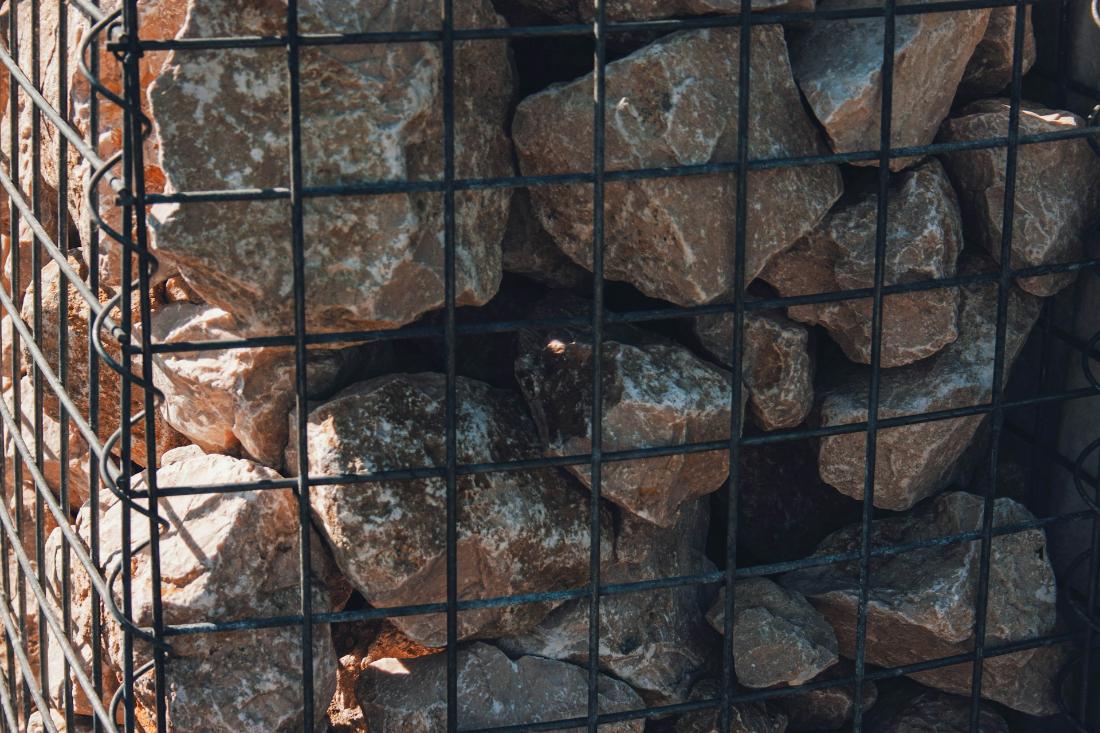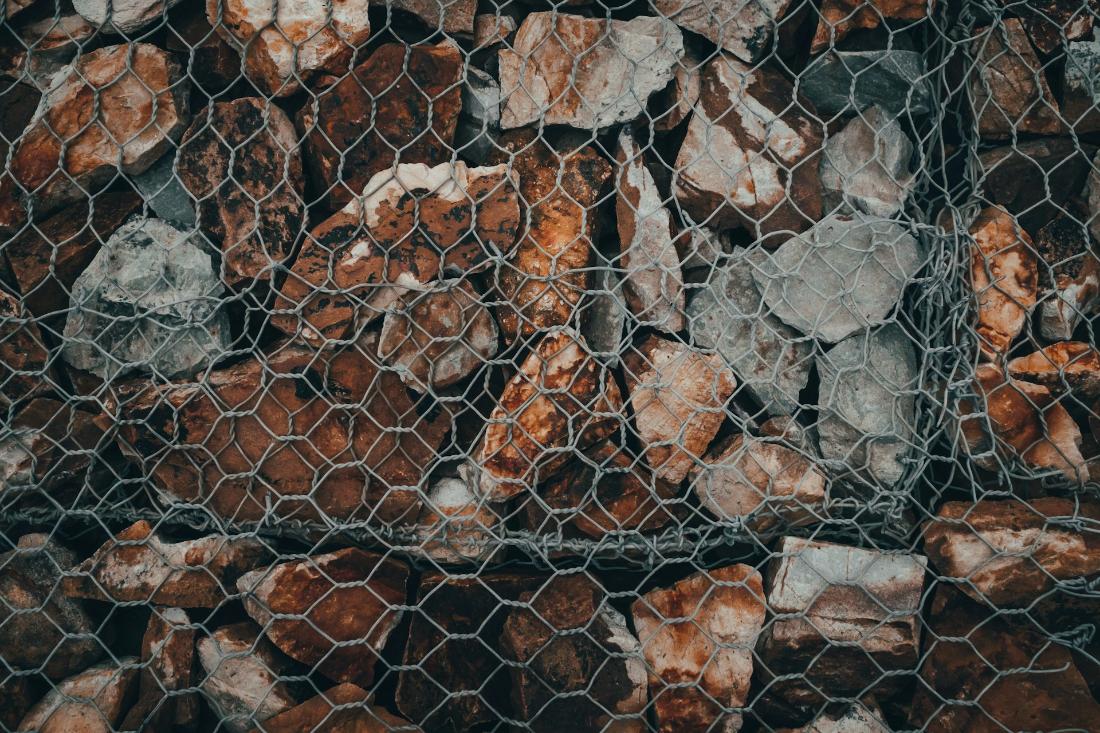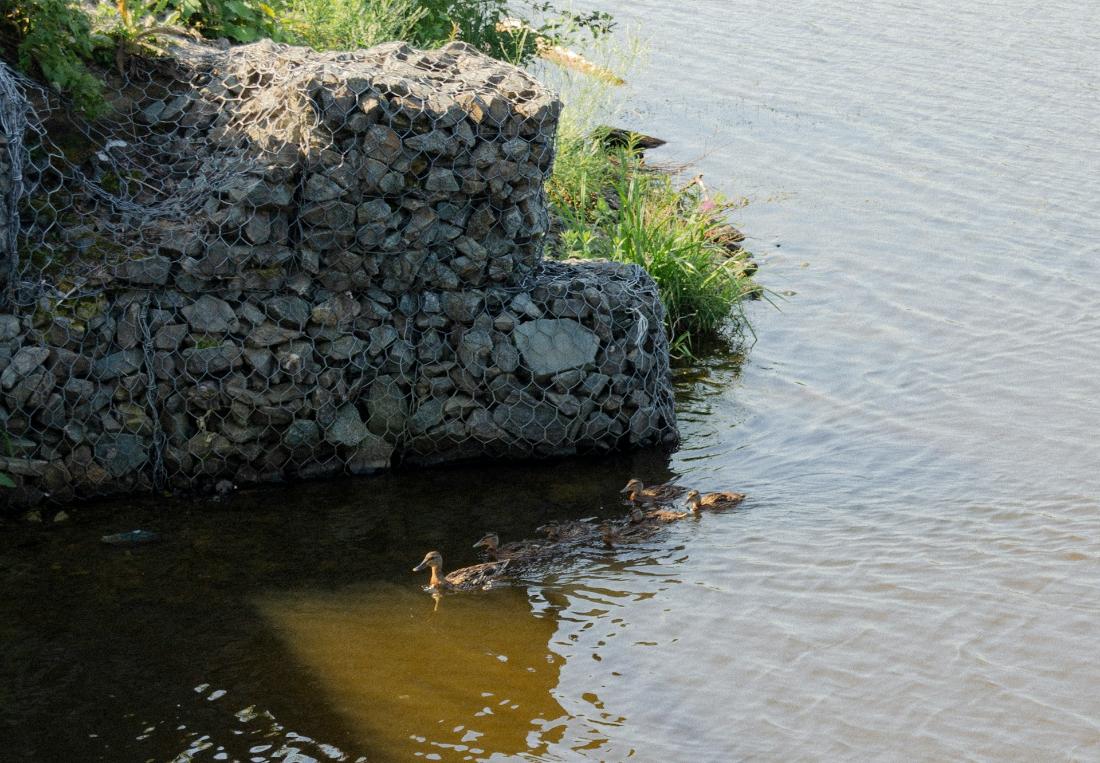Material
Gabion Contractor in Malaysia: Building Sustainable Landscapes with Stone and Steel
May 1 2025
In the heart of Malaysia's diverse landscapes, where tropical downpours meet urban development, gabion structures have emerged as both a practical and aesthetic solution for modern construction challenges. These wire mesh containers filled with stones are transforming how we approach erosion control, landscaping, and architectural design across the country. From the steep slopes of Genting Highlands to the coastal edges of Penang, gabions offer a unique blend of functionality and visual appeal that concrete simply cannot match.
For property owners, landscape architects, and construction professionals seeking reliable gabion solutions, finding the right gabion contractor in Malaysia makes all the difference between a structure that lasts decades and one that fails within seasons. This comprehensive guide explores the world of gabion construction, helping you understand its applications, benefits, and how to select the perfect contractor for your project.
The Rising Popularity of Gabions in Malaysian Construction
Gabions have moved beyond their traditional role as simple erosion control measures. Today, they represent a sophisticated construction technique that addresses multiple challenges simultaneously. The reasons for their growing popularity in Malaysia are as varied as their applications.
Malaysia's tropical climate presents unique challenges to conventional construction methods. The heavy monsoon rains that sweep across the peninsula from November to February test the limits of traditional retaining walls and slope stabilization systems. Gabions, with their permeable design, allow water to flow through rather than building up pressure behind solid structures. This fundamental characteristic makes them particularly suited to Malaysia's weather patterns.
Beyond their practical benefits, gabions offer an aesthetic quality that resonates with contemporary design sensibilities. The natural stone fillings create textured surfaces that age gracefully, developing a patina that blends beautifully with outdoor environments. This has made them increasingly popular among landscape architects working on high-end residential projects and commercial developments throughout Kuala Lumpur, Johor Bahru, and Penang.
Environmental considerations also play a significant role in gabion adoption. In an era where sustainable construction practices are no longer optional but essential, gabions stand out for their low environmental impact. They require minimal processing of materials, can incorporate locally sourced stones, and create habitats for small organisms. This eco-friendly profile aligns perfectly with Malaysia's growing emphasis on green building practices.
For property owners, landscape architects, and construction professionals seeking reliable gabion solutions, finding the right gabion contractor in Malaysia makes all the difference between a structure that lasts decades and one that fails within seasons. This comprehensive guide explores the world of gabion construction, helping you understand its applications, benefits, and how to select the perfect contractor for your project.
The Rising Popularity of Gabions in Malaysian Construction
Gabions have moved beyond their traditional role as simple erosion control measures. Today, they represent a sophisticated construction technique that addresses multiple challenges simultaneously. The reasons for their growing popularity in Malaysia are as varied as their applications.
Malaysia's tropical climate presents unique challenges to conventional construction methods. The heavy monsoon rains that sweep across the peninsula from November to February test the limits of traditional retaining walls and slope stabilization systems. Gabions, with their permeable design, allow water to flow through rather than building up pressure behind solid structures. This fundamental characteristic makes them particularly suited to Malaysia's weather patterns.
Beyond their practical benefits, gabions offer an aesthetic quality that resonates with contemporary design sensibilities. The natural stone fillings create textured surfaces that age gracefully, developing a patina that blends beautifully with outdoor environments. This has made them increasingly popular among landscape architects working on high-end residential projects and commercial developments throughout Kuala Lumpur, Johor Bahru, and Penang.
Environmental considerations also play a significant role in gabion adoption. In an era where sustainable construction practices are no longer optional but essential, gabions stand out for their low environmental impact. They require minimal processing of materials, can incorporate locally sourced stones, and create habitats for small organisms. This eco-friendly profile aligns perfectly with Malaysia's growing emphasis on green building practices.
Understanding Gabion Applications in the Malaysian Context
Gabion structures serve numerous functions across Malaysia's varied topography and development needs. Their versatility makes them suitable for projects ranging from small residential gardens to large-scale infrastructure developments.
Along Malaysia's extensive coastline, gabions provide effective protection against erosion while being more environmentally sensitive than concrete seawalls. The permeable structure dissipates wave energy while allowing natural water flow, making them ideal for beachfront properties in Langkawi, Port Dickson, and other coastal areas. The Department of Irrigation and Drainage (DID) has increasingly specified gabions for riverbank stabilization projects, recognizing their superior performance in Malaysia's dynamic water systems.
In urban areas, gabions serve both practical and aesthetic purposes. They create attractive noise barriers along highways, with the stone fill providing natural sound absorption. Many commercial developments now incorporate gabion walls as design features, using carefully selected stone colors and textures to complement architectural themes. Some innovative applications include gabion-clad building facades and interior feature walls in luxury hotels and resorts.
For residential properties, gabions offer homeowners durable and attractive solutions for garden terraces, pool surrounds, and boundary walls. Their natural appearance blends seamlessly with outdoor spaces, creating a harmonious transition between built and natural environments. The ability to incorporate planting pockets directly into the structure has made them particularly popular for creating living walls in urban gardens.
Selecting the Right Gabion Contractor: Key Considerations
The quality of gabion installation varies significantly between contractors, making careful selection crucial for project success. A poorly constructed gabion wall may bulge, collapse prematurely, or develop rust issues that compromise both function and appearance.
Experienced contractors bring valuable technical knowledge to gabion projects. They understand how to assess soil conditions and slope stability, ensuring the proper foundation preparation that gabion structures require. Their expertise extends to selecting the appropriate wire gauge and coating for specific environments - a critical consideration in Malaysia's humid climate and coastal areas where salt spray accelerates corrosion.
Material quality represents another important differentiator among contractors. Reputable firms use hot-dip galvanized or PVC-coated wire mesh that meets international standards, along with durable stone fill that won't degrade over time. They also install proper filter fabric behind walls to prevent soil loss while maintaining permeability.
Design capability separates basic gabion installers from true specialists. While simple retaining walls are relatively straightforward, complex projects require contractors who can execute curved structures, incorporate lighting systems, or create precise stone patterns for architectural effect. The best contractors collaborate closely with designers to achieve both functional and aesthetic objectives.
When evaluating potential contractors, reviewing their project portfolio provides valuable insights. Look for completed projects similar in scale and complexity to yours, whether it's a small garden feature or a major slope stabilization project. Don't hesitate to request references and visit completed installations to assess their quality firsthand.
Gabion structures serve numerous functions across Malaysia's varied topography and development needs. Their versatility makes them suitable for projects ranging from small residential gardens to large-scale infrastructure developments.
Along Malaysia's extensive coastline, gabions provide effective protection against erosion while being more environmentally sensitive than concrete seawalls. The permeable structure dissipates wave energy while allowing natural water flow, making them ideal for beachfront properties in Langkawi, Port Dickson, and other coastal areas. The Department of Irrigation and Drainage (DID) has increasingly specified gabions for riverbank stabilization projects, recognizing their superior performance in Malaysia's dynamic water systems.
In urban areas, gabions serve both practical and aesthetic purposes. They create attractive noise barriers along highways, with the stone fill providing natural sound absorption. Many commercial developments now incorporate gabion walls as design features, using carefully selected stone colors and textures to complement architectural themes. Some innovative applications include gabion-clad building facades and interior feature walls in luxury hotels and resorts.
For residential properties, gabions offer homeowners durable and attractive solutions for garden terraces, pool surrounds, and boundary walls. Their natural appearance blends seamlessly with outdoor spaces, creating a harmonious transition between built and natural environments. The ability to incorporate planting pockets directly into the structure has made them particularly popular for creating living walls in urban gardens.
Selecting the Right Gabion Contractor: Key Considerations
The quality of gabion installation varies significantly between contractors, making careful selection crucial for project success. A poorly constructed gabion wall may bulge, collapse prematurely, or develop rust issues that compromise both function and appearance.
Experienced contractors bring valuable technical knowledge to gabion projects. They understand how to assess soil conditions and slope stability, ensuring the proper foundation preparation that gabion structures require. Their expertise extends to selecting the appropriate wire gauge and coating for specific environments - a critical consideration in Malaysia's humid climate and coastal areas where salt spray accelerates corrosion.
Material quality represents another important differentiator among contractors. Reputable firms use hot-dip galvanized or PVC-coated wire mesh that meets international standards, along with durable stone fill that won't degrade over time. They also install proper filter fabric behind walls to prevent soil loss while maintaining permeability.
Design capability separates basic gabion installers from true specialists. While simple retaining walls are relatively straightforward, complex projects require contractors who can execute curved structures, incorporate lighting systems, or create precise stone patterns for architectural effect. The best contractors collaborate closely with designers to achieve both functional and aesthetic objectives.
When evaluating potential contractors, reviewing their project portfolio provides valuable insights. Look for completed projects similar in scale and complexity to yours, whether it's a small garden feature or a major slope stabilization project. Don't hesitate to request references and visit completed installations to assess their quality firsthand.
The Gabion Installation Process: What Property Owners Should Expect
Quality gabion installation follows a systematic process that begins with thorough site assessment. Contractors evaluate soil conditions, drainage patterns, and structural requirements before finalizing designs. This preliminary stage often determines the project's long-term success, as improper assessment can lead to structural failures down the line.
Material selection comes next, with decisions about wire mesh type, stone characteristics, and any special features like lighting or planting systems. In Malaysia, contractors often recommend PVC-coated mesh for coastal projects or areas with high humidity, while hot-dip galvanized mesh may suffice for inland locations.
Foundation preparation forms the most critical phase of gabion construction. Unlike conventional walls, gabions require carefully prepared bases that accommodate their permeable nature while providing stable support. Contractors typically excavate to firm ground, compact the base material, and often install a granular drainage layer beneath the structure.
The assembly process involves constructing the wire mesh containers, carefully filling them with stone, and securing the lids. Experienced crews pay particular attention to stone placement, ensuring even distribution and proper compaction for structural integrity. The final stages may include adding coping stones, planting vegetation, or installing lighting systems as specified in the design.
Cost Factors and Long-Term Value of Gabion Structures
Gabion project costs in Malaysia vary based on several factors. Wall height and length naturally affect material quantities, while site accessibility can influence labor requirements. The choice between standard galvanized mesh and premium PVC-coated options creates price variations, as does the selection of stone type - local quarry stone typically costs less than imported or specialty rock.
While gabions may require higher initial investment than some conventional alternatives, their long-term value becomes apparent when considering maintenance requirements and lifespan. Properly installed gabion structures can last 50 years or more with minimal upkeep, needing only occasional vegetation trimming and inspection for wire damage in corrosive environments.
This durability, combined with their aesthetic appeal and environmental benefits, makes gabions a smart investment for Malaysian property owners and developers. As construction practices continue evolving toward more sustainable solutions, gabions stand poised to play an increasingly important role in shaping Malaysia's built environment.
By partnering with an experienced gabion contractor in Malaysia, you gain access to this versatile construction technique that combines ancient wisdom with modern engineering - creating structures that are as beautiful as they are functional, and as durable as they are sustainable.
Quality gabion installation follows a systematic process that begins with thorough site assessment. Contractors evaluate soil conditions, drainage patterns, and structural requirements before finalizing designs. This preliminary stage often determines the project's long-term success, as improper assessment can lead to structural failures down the line.
Material selection comes next, with decisions about wire mesh type, stone characteristics, and any special features like lighting or planting systems. In Malaysia, contractors often recommend PVC-coated mesh for coastal projects or areas with high humidity, while hot-dip galvanized mesh may suffice for inland locations.
Foundation preparation forms the most critical phase of gabion construction. Unlike conventional walls, gabions require carefully prepared bases that accommodate their permeable nature while providing stable support. Contractors typically excavate to firm ground, compact the base material, and often install a granular drainage layer beneath the structure.
The assembly process involves constructing the wire mesh containers, carefully filling them with stone, and securing the lids. Experienced crews pay particular attention to stone placement, ensuring even distribution and proper compaction for structural integrity. The final stages may include adding coping stones, planting vegetation, or installing lighting systems as specified in the design.
Cost Factors and Long-Term Value of Gabion Structures
Gabion project costs in Malaysia vary based on several factors. Wall height and length naturally affect material quantities, while site accessibility can influence labor requirements. The choice between standard galvanized mesh and premium PVC-coated options creates price variations, as does the selection of stone type - local quarry stone typically costs less than imported or specialty rock.
While gabions may require higher initial investment than some conventional alternatives, their long-term value becomes apparent when considering maintenance requirements and lifespan. Properly installed gabion structures can last 50 years or more with minimal upkeep, needing only occasional vegetation trimming and inspection for wire damage in corrosive environments.
This durability, combined with their aesthetic appeal and environmental benefits, makes gabions a smart investment for Malaysian property owners and developers. As construction practices continue evolving toward more sustainable solutions, gabions stand poised to play an increasingly important role in shaping Malaysia's built environment.
By partnering with an experienced gabion contractor in Malaysia, you gain access to this versatile construction technique that combines ancient wisdom with modern engineering - creating structures that are as beautiful as they are functional, and as durable as they are sustainable.


